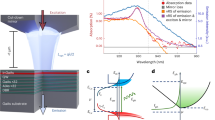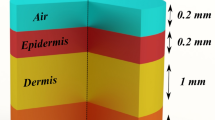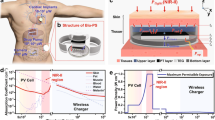Abstract
SOME recent reports on photoelectric effects in human bone by Becker and co-workers have been interpreted as evidence that bone exhibits semiconducting properties, including photoconductivity1,2. The present investigation leads to the conclusion that the effect of light on bone is simply heating, which is often difficult to distinguish from photoconductivity. The reported photoelectric effects1,2 can probably be attributed to such an “artefact”.
This is a preview of subscription content, access via your institution
Access options
Subscribe to this journal
Receive 51 print issues and online access
$199.00 per year
only $3.90 per issue
Buy this article
- Purchase on SpringerLink
- Instant access to full article PDF
Prices may be subject to local taxes which are calculated during checkout
Similar content being viewed by others
References
Becker, R. O., and Brown, F. M., Nature, 206, 1325 (1965).
Becker, R. O., Bassett, C. A., and Bachman, C. H., in Proc. Intern. Symp. Biodynamics of Bone (Little, Brown and Co., 1964).
Author information
Authors and Affiliations
Rights and permissions
About this article
Cite this article
SPRUCH, G., SHAMOS, M. Light Induced Effects in Bone. Nature 212, 1586–1587 (1966). https://doi.org/10.1038/2121586a0
Published:
Issue date:
DOI: https://doi.org/10.1038/2121586a0
This article is cited by
-
p-n Junctions and the Piezoelectric Response of Bone
Nature New Biology (1971)
-
Inhibition of water uptake by high concentrations of auxin-like substances
Biologia Plantarum (1970)
-
Biologic significance of piezoelectricity
Calcified Tissue Research (1967)



